|
 Secure Site
Secure Site
|
 |
Archive for the 'Yoga Timers by Now & Zen' Category
 can yoga help you fall asleep? If you’re one of the millions of sleep-starved Americans with a dwindling supply of fence-jumping sheep, try introducing a few Downward Dogs to your bedtime menagerie. A recent clinical study at Boston’s Brigham and Women’s Hospital confirmed that bedtime yoga can help chronic insomniacs significantly reduce their tossing-and-turning time.
The results are most likely linked to yoga’s soothing effect on the central nervous system, says lead study author Sat Bir Khalsa, Ph.D., assistant professor at Harvard Medical School. In insomniacs, levels of the stress hormone cortisol are elevated,” he explains. Yoga can reduce cortisol levels, which is why you have that feeling of calm after practicing it.” And while the study’s poses were selected for their sleep-promoting effects (see below for instructions), Khalsa says most types of yoga, practiced regularly at any time of day, should bring on more nighttime ZZZs. Sleep-promoting yogic breathing exercises
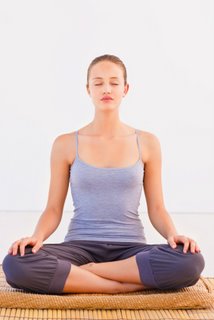 yoga exercises for insomnia Exercise 1
Sit with a straight spine, with your head erect and chin lightly tucked in. Extend both arms up to form a 60-degree angle (almost vertical), with wrists straight and palms and fingers extended flat and facing up. Keep elbows straight. Begin slow deep breathing through the nose. As you inhale, let your abdomen extend out as though it were being filled with air. As the inhale continues, let your chest expand. At the end of the inhale, pause briefly with your breath suspended; do not to lock your throat to hold the breath, but rather suspend the breath by lifting and suspending the motion of the chest. As you start to exhale, let the chest contract first. As the exhale continues, pull in your abdomen slightly as though it were being emptied of air. Pause briefly at the end of the exhale before beginning the next inhale. The breath rate should be four breaths per minute or slower (15 seconds or longer for each complete inhale/exhale). It is important that this breath, as with all of the breathing in these exercises, is done through the nose. Keep your eyes closed during this exercise, and focus your mental attention on the flow of the breath. Continue for 2 to 3 minutes using your zen timer in repeat mode. At the end, inhale deeply and hold for 10 seconds. Exhale, and let your breath relax as you keep your mental focus on the flow of the breath for about 1 minute with eyes closed.
 Yoga Timer & Chime Alarm Clock by Now & Zen, Inc. - Boulder, CO Exercise 2
Sit with a straight spine, with your head erect and chin lightly tucked in. Extend the arms out to the sides parallel to the ground. Bend the wrists with the fingers pointing straight up. (Your hands look like you’re pressing out toward two walls.) Begin slow deep breathing as described in Exercise 1. Continue for 2 to 3 minutes. At the end, inhale deeply and hold for 10 seconds. Exhale, and let your breath relax as you keep your mental focus on the flow of the breath for about 1 minute with eyes closed.
The Digital Zen Clock serves as a countdown and interval timer for yoga, meditation, bodywork, etc.; and it can also be set to chime on the hour as a tool for “mindfulness.”
 yoga for better sleep Exercise 3
Sit with a straight spine, with the head erect and the chin lightly tucked in. Press the palms together in front of the chest. The fingers of the right hand fingers go over the side of the left index finger and onto the back of the left hand. It is a “cross-lock” with the fingers crossing each other at 90 degrees. Squeeze the hands toward each other with continuous pressure. Begin slow deep breathing as described in Exercise 1. Continue for 2-3 minutes. At the end, inhale deeply and hold with a final push together of the hands for 10 seconds. Exhale, and let your breath relax as you keep your mental focus on the flow of the breath for about 1 minute with eyes closed.
Exercise 4
Sit with a straight spine, with your head erect and chin lightly tucked in. Place your hands in your lap, palms facing up, right hand over the left. The thumb tips touch and point forward. Keep the eyelids half closed. Look downward past the tip of your nose. Inhale in four equal segments through the nose. Mentally recite the sound scale, “Sah Tah Nah Mah”, with one syllable for each stroke of the breath. Then hold the breath by lifting and suspending the motion of the chest. As you hold the breath, mentally repeat the scale four times, for a total of 16 beats. Then exhale in two equal and powerful strokes out the nose. Mentally recite “Wah-Hay” on the first segment out, and “Goo-Roo” on the second stroke out. Continue for 5 to 31 minutes. At the end, inhale deeply and hold for 10 seconds. Exhale, and let your breath relax as you keep your mental focus on the flow of the breath for a few minutes. If you wake up in the night and have trouble falling back asleep, do this exercise for 5 to 11 minutes.
adapted from Body + Soul, April/May 2007
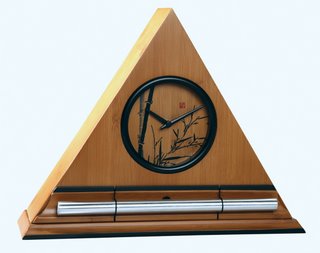 Bamboo Zen Clocks, progressive chime clock and timer for yoga Now & Zen’s Yoga Time & Chime Alarm Clock Shop
1638 Pearl Street
Boulder, CO 80302
(800) 779-6383
Posted in Insomnia, intention, Meditation Timers, mindfulness practice, sleep, Sleep Habits, Well-being, yoga, Yoga Timer, Yoga Timers by Now & Zen
 breathing exercises help relieve stress How simple breath work can lead you to a deep state of relaxation.
Beginning students often ask for instructions on the “right” way to breathe. Alas, there’s no single answer to that question, since the optimal breathing pattern at any given moment depends on the type of practice. Restorative yoga focuses solely on relaxation, though, and emphasizes breathing that creates calm and serene states of being. When you settle into restorative poses, try the following techniques for cultivating breathing patterns that are hallmarks of relaxation and well-being.
MOVE THE BELLY WITH THE BREATH. When we are at ease, the diaphragm is the primary engine of the breath. As we inhale, this domelike muscle descends toward the abdomen, displacing the abdominal muscles and gently swelling the belly. As we exhale, the diaphragm releases back toward the heart, enabling the belly to release toward the spine.
KEEP THE UPPER BODY QUIET. During high-stress times, it’s common to heave the upper chest and grip the muscles in the shoulders and throat. When we’re at rest, the muscles of the upper chest remain soft and relaxed as we breathe, and the real work occurs in the lower rib cage. To promote this type of breathing pattern, consciously relax the jaw, throat, neck, and shoulders, and envision the breath sweeping into the deepest parts of the lungs as you breathe in and out.
BREATHE EASY. Although some breaths may be deeper or faster than others, when we’re relaxed, the alternating rhythm of the inhalations and exhalations feels like a lullaby—smooth, soft, and uninterrupted by jerks and jags. Consciously relaxing into this wavelike, oceanic quality of the breath deepens our sense of peace and ease.
LENGTHEN THE EXHALATIONS. When we feel stressed, our exhalations tend to grow short and choppy. When we’re relaxed, though, the exhalations extend so completely that they are often longer than the inhalations. Some teachers even instruct that if we’re deeply relaxed, each exhalation will be twice as long as the inhalation. To facilitate this, try gently extending each exhalation by one or two seconds. Set your Bamboo Meditation Timer with Chime for 20 minutes and continue this exercise.
PAUSE AFTER EACH EXHALATION. In our most relaxed state, the end of each exhalation is punctuated by a short pause. Lingering in this sweet spot can be deeply satisfying and can evoke feelings of profound quiet and stillness.
LET THE WHOLE BODY BREATHE. When we are at ease, the whole body participates in the breathing process. Imagine a sleeping baby: When he breathes in and out, the belly swells and releases, the hips rock to and fro, the shoulders bob, and the spine gently undulates. This offers a mini-massage for the muscles and organs of the whole body, and turns each breath into a soothing melody that further calms and quiets every cell within.
adapted from Yoga Journal Magazine, by Claudia Cummins
Our Chime Meditation Clock & Timer’s long-resonating Tibetan bell-like chime makes waking up and meditation a beautiful experience – its progressive chimes begin your day with grace.
The Chime Meditation Clock & Timer serves as a countdown and interval timer for yoga, meditation, bodywork, etc.; and it can also be set to chime on the hour as a tool for “mindfulness.”
 Bamboo Meditation Timers with Soothing Chimes for Breathe Work Now & Zen’s Chime Timer and Alarm Clock Shop
1638 Pearl Street
Boulder, CO
(800) 779-6383
Posted in Meditation Timers, Meditation Tools, mindfulness practice, Well-being, yoga, Yoga Timer, Yoga Timers by Now & Zen, Zen Timers
 Stretch and do Yoga with Your Chime Timer to Create a Wake Up routine in the Morning These energy-boosting changes to your daily routine will leave you feeling recharged.
Time to Wake Up!
Even if you’re a morning person, you’re probably far from firing on all cylinders when you first open your eyes. “It can take up to two hours to get the brain fully alert,” says Matthew Edlund, M.D., the director of the Gulf Coast Sleep Institute, in Sarasota, Florida, and the author ofThe Power of Rest: Why Sleep Alone Is Not Enough ($26, amazon.com). One reason you’re lethargic is that your core body temperature has dipped during the night to keep you in deep, restorative slumber. Try these morning energy strategies to get going with a lot less grief.
Let in the sun and stretch. Exposure to light stimulates your brain to stop producing melatonin (the hormone that helps induce sleepiness), says Edlund. Light also gets your body out of sleep mode by resetting the brain’s suprachiasmatic nucleus (a big name for a region about the size of a grain of rice), which controls the body’s circadian rhythms (or 24-hour biological clock). Meanwhile, Edlund says, “the first physical activity of the day raises the body temperature and increases blood flow to your brain.” Open the blinds, then try some stretches in front of the window. (If neighbors live in close range, make sure your pj’s are presentable.) Use your Zen Timepiece by setting it to count down in 20 minutes while you gently stretch and do a few yoga poses.
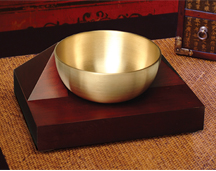 Chime Timer by Now & Zen with Tibetan-Singing Bowl Gong Get moving. A morning workout triggers feel-good endorphins and lowers elevated stress hormones. The effects can last six to eight hours, says Gregory Florez, a spokesperson for the American Council on Exercise, in Salt Lake City: “Morning exercisers tend not to have midmorning slumps and are sharper mentally than if they hadn’t exercised.” You’ll get the most bang for your energy buck, he says, with a workout that includes both cardio and strength training.
Look at something you love. Mornings are especially hard because we’re in survival mode, says Jim Loehr, Ed.D., a cofounder of the Human Performance Institute, in Orlando, Florida. We have to meet basic needs, like hunger and thirst, and to the body that feels as if we’re under threat, which saps our energy. Positive emotions, like hope and gratitude, fight that energy drain by counteracting the primal messages that we’re in some kind of danger. Loehr suggests kick-starting those positive emotions by looking at something meaningful: Next to your bed, place a treasured photo, flowers, or anything else you’re grateful to see.
Shake up your routine. The brain responds to novel experiences by releasing a rush of neurotransmitters, such as dopamine, which make you more alert. No need for a morning cliff dive—just take something ordinary and switch it up: If you’re right-handed, use your left hand to brush your teeth.
By Amy Paturel and Sara Reistad-Long from RealSimple.com
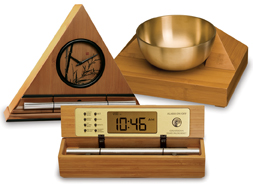 Chime Timers and Clocks for A Gradual Awakening Now & Zen Headquarter Store
1638 Pearl Street
Boulder, CO 80302
(800) 779-6383
Posted in Chime Alarm Clocks, Now & Zen Alarm Clocks, wake up alarm clock, Well-being, Yoga Timer, Yoga Timers by Now & Zen
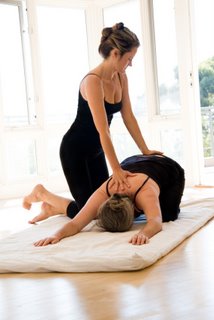 yoga to calm your mind Yoga is a great way to deal with stress—and research backs it up. According to a recent study by the Boston University School of Medicine, any variety of yoga may increase brain levels of the neurotransmitter gamma-aminobutyric acid (GABA), which is associated with relaxation and lowered anxiety. If you’re struggling with an anxiety disorder, try easing it with restorative yoga—the kind that uses pillows or blankets to support your body and allow you to relax deeply in every pose.
A good source for restorative poses is Relax and Renew: Restful Yoga for Stressful Times (Rodmell Press, 1995) by Judith Hanson Lasater. Other helpful poses, says Bo Forbes, founder of the Boston-area Center for Integrative Yoga Therapeutics, include Supported Child’s Pose and Supported Reclining Twist. Practice in a dim, quiet room to cut down on sensory stimulation, and use two-to-one breathing: exhaling for twice as long as you inhale.
For even better results, follow your restorative practice with eight to ten minutes of relaxed, even breathing from your diaphragm (be sure to set your Zen Yoga Timer so that you know when to end your practice), suggests yoga expert Rolf Sovik, Psy.D., director of the Himalayan Institute in Buffalo, N.Y., and author of Moving Inward: The Journey to Meditation (Himalayan Institute Press, 2005). “Breathing calms the nervous system and decreases the impact of anxiety.”
The perfect position for relaxed breathing is Crocodile Pose, Sovik adds. If you have a blanket, roll it into a “Tootsie Roll” shape, fold that into a long horseshoe, and prop it so when you lie on it, chest down, the round end is under your chin and the sides are propping up your chest. A pillow can go under your forehead. This should allow your abdomen to remain relaxed, your lower back to rise and fall, and your rib cage to move freely. Set your Yoga Timer from Now & Zen to chime in five minutes and continue your breathing until it sounds.
adapted from Natural Solutions Magazine, November 2007 by Ben Kallen
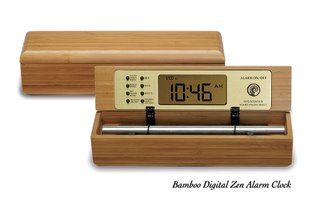 Zen Yoga Timer in Bamboo with Natural Acoustic Chime Our Yoga Timer with Chime also serves as a countdown and interval timer for yoga, meditation, bodywork, etc.; and it can also be set to chime on the hour as a tool for “mindfulness.”
Now & Zen’s Yoga Timer Store
1638 Pearl Street
Boulder, CO 80302
(800) 779-6383
Posted in intention, mindfulness practice, Well-being, yoga, Yoga Timer, Yoga Timers by Now & Zen
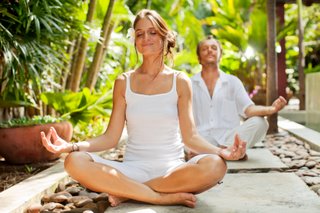 is yoga enough? When it came to the fitness benefits yoga can or can’t provide, yoga teacher John Schumacher had heard it all. A student of B. K. S. Iyengar for 20 years and founder of the Unity Woods studios in the Washington, D.C. area, Schumacher was convinced yoga provides a complete fitness regime. But many people, even some of his own students, disagreed. Yoga might be good for flexibility or relaxation, they’d say, but to be truly fit, you had to combine it with an activity like running or weight lifting.
Schumacher just didn’t buy it.
He knew three decades of yoga practice—and only yoga practice—had kept him fit. He didn’t need to power walk. He didn’t need to lift weights. His fitness formula consisted of daily asanas (poses) and pranayama (breathwork). That’s all he needed.
Four years ago at age 52, Schumacher decided to prove his point. He signed up for physiological testing at a lab in Gaithersburg, Maryland. As he expected, Schumacher tested near the top of his age group for a variety of fitness tests, including maximum heart and exercise recovery rates. His doctor told him that he was in excellent physical condition and estimated that Schumacher had less than a one percent chance of suffering a cardiac event. “I’ve always maintained that yoga provides more than adequate cardiovascular benefits,” says Schumacher. “Now I have the evidence that regular yoga practice at a certain level of intensity will provide you with what you need.”
Evidence of yoga’s ability to bolster fitness, however, goes well beyond Schumacher’s personal experience. Yoga Journal’s testing of three yogis also yielded impressive results. Even physiologists who don’t do yoga now agree that the practice provides benefits well beyond flexibility and relaxation. Recent research—though preliminary—shows that yoga may also improve strength, aerobic capacity, and lung function. If you practice yoga, you already knew that. But if, like Schumacher, you’ve been told by friends, family, doctors, or even other yoga students that you need to add some power walking for your heart or strength training for your muscles, here’s evidence that yoga is all you need for a fit mind and body.
Why Yoga Works
Exactly how does yoga build fitness? The answer you get depends on whom you ask. Robert Holly, Ph.D., a senior lecturer in the Department of Exercise Biology at U. C. Davis and one of the researchers on the U. C. Davis study, says that muscles respond to stretching by becoming larger and capable of extracting and using more oxygen more quickly. In other words, side benefits of flexibility include increased muscle strength and endurance.
“My own belief is that the small but significant increase in maximal oxygen capacity was due to an increase in muscle endurance, which allowed the subjects to exercise longer, extract more oxygen, and reach an increased maximal oxygen uptake,” says Holly.
Then there’s the pranayama theory. Birkel suspects that yoga poses help increase lung capacity by improving the flexibility of the rib area, shoulders, and back, allowing the lungs to expand more fully. Breathwork further boosts lung capacity—and possibly also VO2max—by conditioning the diaphragm and helping to more fully oxygenate the blood.
Birkel, Dina Amsterdam, and others are also quick to point out that Suryanamaskar (Sun Salutations) and other continuously linked poses increase the heart rate, making yoga aerobically challenging. And many yoga poses—particularly standing poses, balancing poses, and inversions—build quite a bit of strength because they require sustained isometric contractions of many large and small muscles. Of course, holding the poses longer increases this training effect.
Finally, yoga tunes you into your body and helps you to better coordinate your actions. “When you bring your breath, your awareness, and your physical body into harmony, you allow your body to work at its maximum fitness capacity,” says Dina Amsterdam. “Yoga class is merely a laboratory for how to be in harmony with the body in every activity outside of yoga. This improved physical wellness and fluidity enhance not just the physical well-being but also permeate all levels of our being.”
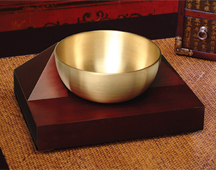 Yoga Timer with Tibetan Singing-Bowl Use our unique “Zen Clock” which functions as a Yoga Timer. It features a long-resonating acoustic chime that brings your meditation or yoga session to a gradual close, preserving the environment of stillness while also acting as an effective time signal. Our Yoga Timer & Clock can be programmed to chime at the end of the meditation or yoga session or periodically throughout the session as a kind of sonic yantra. The beauty and functionality of the Zen Clock/Timer makes it a meditation tool that can actually help you “make time” for meditation in your life. Bring yourself back to balance.
 yoga chime timers and clocks Now & Zen’s Yoga Timer Shop
1638 Pearl St.
Boulder, CO 80302
(800) 779-6383
Adapted from Yoga Journal.com by Alisa Bauman stays fit through yoga, running, and fitness ball workouts.
Posted in yoga, Yoga Timer, Yoga Timers by Now & Zen
 Meditation - Utamaro Woman I have always been intrigued by the idea of meditation. I would love to be able to sit quietly, relax and let my mind wander into a trancelike rest, all at the same time.
There are reported medical benefits to regular meditation too: you can bring down your heart rate and blood pressure. Meditation has been shown to help insomniacs sleep, nervous Nellies relax and those withchronic pain breathe more easily.
Meditation sounds like a perfect dream, actually, but who has time for that? As a television producer, I would say my daily list of things to do can run longer than a pilgrimage to the Ganges. Would it be worth adding meditation to my to-do list? I needed to be convinced.
So I went to Avery Fisher Hall in Manhattan for a group meditation led by Sri Sri Ravi Shankar, a spiritual leader and founder of The Art of Living Foundation. “The Guru,” as he is called, traveled from southern India to kick off the “I Meditate NY” campaign, designed to introduce stressed-out New Yorkers to the powers of the ancient practice of meditation. Gathered in the hall normally reserved for plays and operas were nearly 2,700 people ready to follow the spiritual teachings of the master on stage.
The preparation began with ancient Sanskrit chants from the folk group Bakti and soulful vocals from the Grammy-nominated singer Chandrika Tandon. But before long The Guru took center stage, sitting in the lotus position on a regal loveseat.
With a creeping smile on his face, he began to explain the three platinum rules of meditation. The first, he said, was to say to oneself, “For the next 10 minutes, I want nothing.” Sounded simple enough, but the truth is I did want something. I was a little hungry, even though I had a pretty big cheeseburger a few hours earlier. It even had all sorts of extras on it. My mind started to wander: Why was I hungry when I just had a big meal? Maybe it wasn’t as big as I thought? Oh man, that means that cheeseburger must have clearly been full of empty calories.
But The Guru had already moved on to platinum rule number two: “For the next 10 minutes, I do nothing.” Just then, my foot started to itch. I reached down to scratch it immediately, figuring the clock hadn’t yet started.
Rule three: “For the next ten minutes, I am nothing.” Now he was on to something. I liked that idea. It made me feel as if I had permission to float away, let my spirit drift into oblivion, all the while surrounded by thousands of people.
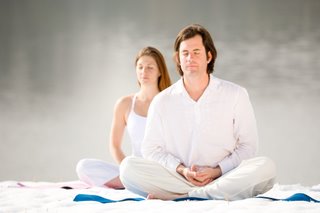 Meditation - Choose a Gong Meditation Timer Sounds of Silence
The group was full of Om’s and ready to sink into silence… or so we thought. Just then, The Guru reached into the pocket of his caftan for hiscellphone. The crowd burst into laughter — no doubt, this was a 21st-century guru. He promised it was only to time our imminent meditation, which he has said would last about 10 minutes.
Now we were on our way. He asked everyone to keep still and be quiet. If you didn’t think you could do so, it was now time for you to leave. He said nobody should leave in the middle of the journey, as that would not be fair to others around them. Parents with children were asked to leave now. It was time to begin.
The room fell silent, but not silent enough. There were coughs, bodily noises, feet sliding, and yes, a cell phone. I thought, it’s going to be tough to concentrate on doing nothing. The coughs seemed ceaseless. I wondered, well, we are heading into allergy season, is that why there are so many coughs? Or is this just how people always are? It isn’t often I’m in a room with 2,700 people.
But then something happened. I don’t really know what happened, because it’s as if I wasn’t there when it occurred. I mean, I was there, but I was nothing more than just there. Sitting. Breathing. Not hearing coughs. Not hearing feet shuffling. Not even hearing silence. I was awake. I was conscious. It wasn’t that hard. I was peaceful. I was meditating.
There we were. An auditorium full of silent people, together, effortless, releasing our minds from daily stress, buried in peace, meditating.
Meditation: Struggling to Do Nothing
And then it was over. The Guru woke us up — and then he gave us a jolt. He told us in his gentle meandering voice that we had been in this “amusement paradise” for 22 minutes. Not 10 minutes as he had suggested, but more than double that. The entire room gasped. We had disappeared for nearly the length of an evening news broadcast.
And, even though it felt counterintuitive to do something so seemingly solitary with so many others, it actually now made perfect sense. Later, The Guru told me, “Group meditations help in creating a positive energy in the atmosphere.” Meditation was all about vibrations, he said. Just as we “catch anger” from angry people around us, we “catch” positive energy from positive people around us. The room was surely full of positivity.
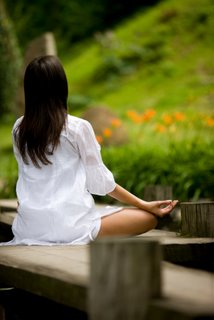 meditation timers with gongs So there you have it. A frazzled New Yorker with a Ganges-long list of to-dos may have just peacefully and willingly made her list longer.
Use our unique “Zen Clock” which functions as a Yoga & Meditation Timer. It features a long-resonating acoustic chime that brings your meditation or yoga session to a gradual close, preserving the environment of stillness while also acting as an effective time signal. Our Yoga Timer & Clock can be programmed to chime at the end of the meditation or yoga session or periodically throughout the session as a kind of sonic yantra. The beauty and functionality of the Zen Clock/Timer makes it a meditation tool that can actually help you “make time” for meditation in your life. Bring yourself back to balance.
It’s exquisite sounds summon your consciousness out of your meditative state with a series of subtle gongs. Once you experience the Zen Timepiece’s progressive tones, you’ll never want to meditate any other way. It serves as the perfect meditation timer. Available in 5 wood styles, including bamboo.
adapted from WorldNewsReport.com by Gitka Ahuja
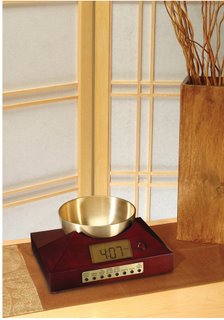 Gong Meditation Timers for Your Stillness Practice Now & Zen – The Gong Meditation Timer Store
1638 Pearl Street
Boulder, CO 80302
(800) 779-6383
Posted in Well-being, Yoga Timer, Yoga Timers by Now & Zen, Zen Alarm Clock, Zen Timepiece by Now & Zen, Zen Timers
 Meditation as a Transformation Tool - Ukiyo-e Many moons ago, a wandering Nepalese prince sat under a tree, vowing not to rise until he attained enlightenment.
After a long night of deep meditation, Siddhartha Gautama, better known as the Buddha, saw the light and declared that suffering is subjective, and can be reduced through self-awareness.
Today, 2500 years later, a growing number of American doctors and healthcare workers are teaching people who are ill how to apply Buddha’s epiphany to their lives.
adapted from abcnews.com by By Ephrat Livni
In hospitals, businesses and community centers around the country, meditation is increasingly being offered as a method of stress reduction, and to help patients better cope with the physical pain and mental strain associated with many medical conditions, including heart disease and HIV infection.
Recent research shows meditation’s soothing effects can be detected in arterial walls and in the brain. Once considered outside the mainstream, today more insurers are paying for meditation, both as a form of medication and as preventive medicine.
Learning to ‘Disidentify’
“Meditation is the act of disidentifying from inner thought flow and concentrating on calming and healing,” explains Robert Thurman, Ph.D., a professor of Indo-Tibetan Buddhist Studies at Columbia University in New York and the first American to become a Tibetan Buddhist monk. Through meditation, doctors help patients detach from their pain and anxieties and cultivate a connection between the mind and the body, he says.
 Gong Clock - Progressive, Soothing Tones to End Your Stillness Practice While there are many kinds of meditation, the mindfulness approach, used widely in hospitals around the country, focuses primarily on breathing. Practices vary, but the basic idea involves sitting comfortably, with eyes closed, spine straight and attention focused on breathing.
Practitioners aim to maintain a detached, calm awareness of their thoughts and sensations. Through mindfulness, experts say, meditators learn to pay attention to the present and cultivate clarity of mind, equanimity and wisdom.
Minor Mindfulness Miracles
All of which may sound very abstract. Unless, points out Jeff Brantley, Ph.D, Director of the Mindfulness-based Stress Reduction (MBSR) Program at the Duke Center for Integrative Medicine in Durham, N.C., you are a patient who is suffering.
“We had one patient, a 40-year-old woman with metastatic breast cancer who was enrolled in the 8-week MBSR program. At her exit interview she said that before the course began 5 minutes wouldn’t go by without her worrying about what would become of her and her young family and now, after the class, she can concentrate on other things for more than hour at a time, even days,” Brantley says, calling the results “a minor miracle.”
The Duke program is one of at least 70 such mind-body based courses modeled on the University of Massachusetts Medical School’s Stress Reduction Clinic, in Worcester, Mass., created in 1979 by Dr. Jon Kabat-Zinn. Taught mainly in hospitals around the country, mindfulness training is typically run as an 8-week-long outpatient program to complement other medical treatments.
The aim, according to a website dedicated to Mindfulness-based Stress Reduction, is to assist people in taking better care of themselves “through a gentle but rigorous daily discipline of meditation and relaxation.”
Doctors refer patients to mindfulness programs for any number of diseases and disorders, including heart disease, anxiety and panic, job or family stress, chronic pain, cancer, HIV infection, AIDS, headaches, sleep disturbances, type A behavior, high blood pressure, fatigue and skin disorders.
In keeping with the growing interest in preventative medicine, some insurance companies, such as Blue Cross/Blue Shield in Massachusetts and a number of insurers in what Thurman calls “the more enlightened states like Oregon and California,” are now paying for all or part of these programs.
Research for Coverage
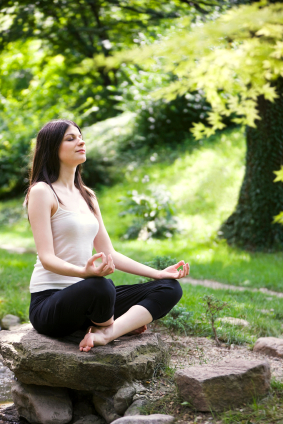 Meditation for Well-being, Choose a Soothing, Chime Timer While the National Institutes of Health says it is too soon to quantify the medical benefits of meditation, Anita Greene, spokeswoman for the Institute’s Complementary and Alternative Medicine division, concedes, “It is a therapy worthy of further scientific investigation to refute or support the health claims being made.”
In fact, in 1999, the NIH granted Maharishi University of Management in Fairfield, Iowa, $8 million during a five-year period to study the effects of meditation in African Americans with cardiovascular diseases.
Researchers at Maharishi say that relaxing and reducing stress through transcendental meditation may reduce artery blockage and the risk of heart attack and stroke, according to a study released in the March issue of the American Heart Association’s journal Stroke (see related story).
Another recent pilot study, published in the May 15 issue of NeuroReport, by Sara Lazar, Ph.D., a Harvard research fellow in psychology at Massachusetts General Hospital, in Boston, suggests meditation activates specific regions of the brain that may influence heart and breathing rates. Using a brain imaging technique known as functional magnetic resonance imaging, or fMRI, Lazar measured blood flow changes in experienced meditators.
“What we found were striking changes. There was significant decrease in blood flow and activity in specific areas of the brain,” says the study’s senior author Dr. Herbert Benson, president of the Mind/Body Medical Institute at Beth Israel Deaconess Medical Center in Boston, Mass.
The usual, fight-or-flight brain response liberates adrenalin and is stressful to the body, he explains, but during meditation the brain acts to quiet the body through concentrated breathing or word repetition, evoking a relaxation response that minimizes the harmful effects of stress.
“It does away with the whole separation of mind and body and gives further proof to insurers that [meditation] is cost effective,” he says. Ultimately, Benson predicts, medicine will be akin to a three-legged stool, leaning on pharmaceuticals, surgeries and procedures, and self-care, which includes, meditation, nutrition, exercise and health management.
A Tool for Transformation
But, Thurman points out, meditation is for more than just health benefits: It is a tool for seeking inner transformation. Meditation practices in the health field are secular, however.
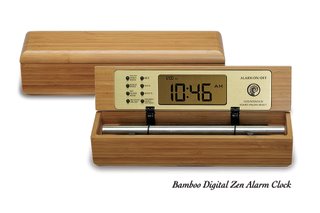 Gong Clock for Meditation and Yoga Practices “We get everyone from born-again Christians to avowed atheists. We tell people we are not trying to make anyone into anything,” Duke’s Brantley reassures. No matter what their religious persuasion, he says, patients find an increased awareness and appreciation of their lives.
Registered nurse Shirley Gilloti, a San Rafael, Calif., health educator and mindfulness training teacher agrees, “I tell people to try to bring more mindfulness to saying their rosary if that’s what they do.”
Use our unique “Zen Clock” which functions as a Yoga & Meditation Timer. It features a long-resonating acoustic chime that brings your meditation or yoga session to a gradual close, preserving the environment of stillness while also acting as an effective time signal. Our Yoga Timer & Clock can be programmed to chime at the end of the meditation or yoga session or periodically throughout the session as a kind of sonic yantra. The beauty and functionality of the Zen Clock/Timer makes it a meditation tool that can actually help you “make time” for meditation in your life. Bring yourself back to balance.
 Gong Clock & Timers by Now & Zen, Inc. - Boulder, CO Now & Zen – The Gong Clock Shop
Downtown Boulder, CO
1638 Pearl Street
Boulder, CO 80302
(800) 779-6383
Orders@Now-Zen.com
Posted in Bamboo Chime Clocks, Yoga Timer, Yoga Timers by Now & Zen, Zen Alarm Clock, Zen Timepiece by Now & Zen
 Cherry Blossoms
Beyond the psychological inquiry into dreams or the self-improvement techniques of affirmations lies the ancient and sacred practice of meditation. Some form of meditation is practiced in every major world religion. Yogis, Christian mystics, Zen Buddhists, Quakers, practitioners of the Kabbalah, and Secular Humanists, all experience the benefits of meditation.
 A Moment of Stillness in Nature
The Zen Timepiece is an exquisite “accoutrement to meditation.” It can be used in a variety of ways to aid your practice and encourage you to “make time” to meditate. The first and most basic use of the Zen Timepiece in your meditation practice is as a signal of the end of your allotted meditation time.
If you want to meditate for twenty minutes, simply set our Chime countdown timer for twenty minutes and begin your meditation. When the countdown timer reaches zero and the bowl/gong is struck, you can choose to end there or continue your meditation for about three and a half minutes until the next bowl strike, or even longer. Many meditators find that a “three and a half minute warning” is a perfect interval in which to gradually conclude their longer meditations. The first strike signals the final phase of the meditation and the second strike its conclusion. The beauty of the brass bowl/gong is that it complements rather than disturbs the meditative state while acting as an effective timer. No matter how you use it, the sonic clarity of the brass bowl provides an appropriate conclusion to your stillness.
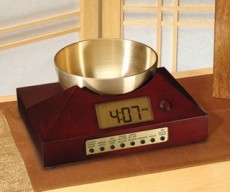 Now & Zen Headquarter Store, Boulder, CO
Now & Zen Headquarter Store, Boulder, CO
The bowl that comes with the Zen Timepiece is made from the following five metals: copper, zinc, lead, iron, and tin. It has been formed using the same forging techniques that have been used in Asia for two thousand years. Unlike hand-hammered Himalayan-style bowls, our Zen Timepiece’s rin gong bowl is made using methods which first appeared in Japan in the first century. Following these traditions, your bowl’s long-resonating tone has been carefully selected to bring beauty and harmony to your environment.
 Clocks and Timers with Gentle, Soothing Chimes
Now & Zen’s Chime Alarm Clock Shop
Home of The Zen Alarm Clock & Zen Timepiece with Singing Bowl
1638 Pearl Street
Boulder, CO 80302
(800) 779-6383
Posted in Japanese Inspired Zen Clocks, Meditation Timers, Meditation Tools, Natural Awakening, Now & Zen Alarm Clocks, Progressive Awakening, Yoga Timers by Now & Zen, Zen Timepiece by Now & Zen, Zen Timers
 Set Your Gong Meditation Timer - Dama tocando el Samisem -artista Shunsui Katsu-Miyagawa A certain type of meditation may help the brain retain images for short periods, says a new study on visual-spatial abilities.
When people view an object, they usually retain a clear picture of it in their visual short-term memory for only a few seconds before the details fade. An experiment by George Mason University researchers, though, found that people who practice Deity Yoga (DY) do much better at visual-spatial tasks shortly after they meditate.
The study’s authors, writing in a recent issue of Psychological Science, said the finding may have “many implications for therapy, treatment of memory loss and mental training.”
Practitioners of DY meditation zero in on an image of their deity, conjuring up a vivid, three-dimensional mental picture of it while honing in on the deity’s emotions and environment.
In the experiment, led by psychologist Maria Kozhevnikov, meditation and non-meditation practitioners performed two visual-spatial tests: imagining the rotation of a 3-D object and viewing an image, then trying to identify it from among several other similar images. After a first round of tests, the participants spent the next 20 minutes either meditating or performing non-meditative tasks before being tested again.
All the subjects had similar scores on the first round of tests, suggesting that meditating in general causes no overall, long-term improvement in visual-spatial skills.
However, those who performed DY meditation between rounds did much better on both tasks in the second phase of tests than those who did non-meditative activities or practiced Open Presence (OP) meditation. OP practitioners, rather than focusing on a specific thing, try to achieve awareness by contemplating a wider array of experiences, images or thoughts that may come to them.
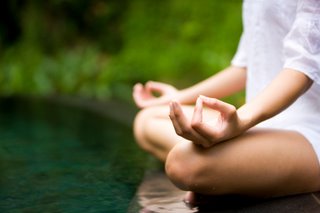 Choose a Gong Meditation Timer for Your Mindfulness Practice The study authors concluded that further investigations should be done to see if other visual meditation techniques can produce similar improvements in visual-spatial memory or if the results are specific to DY meditation.
Use our unique “Zen Clock” which functions as a Yoga & Meditation Timer. It features a long-resonating acoustic chime that brings your meditation or yoga session to a gradual close, preserving the environment of stillness while also acting as an effective time signal.
Our Yoga Timer & Clock can be programmed to chime at the end of the meditation or yoga session or periodically throughout the session as a kind of sonic yantra. The beauty and functionality of the Zen Clock/Timer makes it a meditation tool that can actually help you “make time” for meditation in your life. Bring yourself back to balance.
More information
The National Center for Complementary and Alternative Medicine has more about the health benefits of meditation.
SOURCE: Association for Psychological Science, news release, April 27, 2009
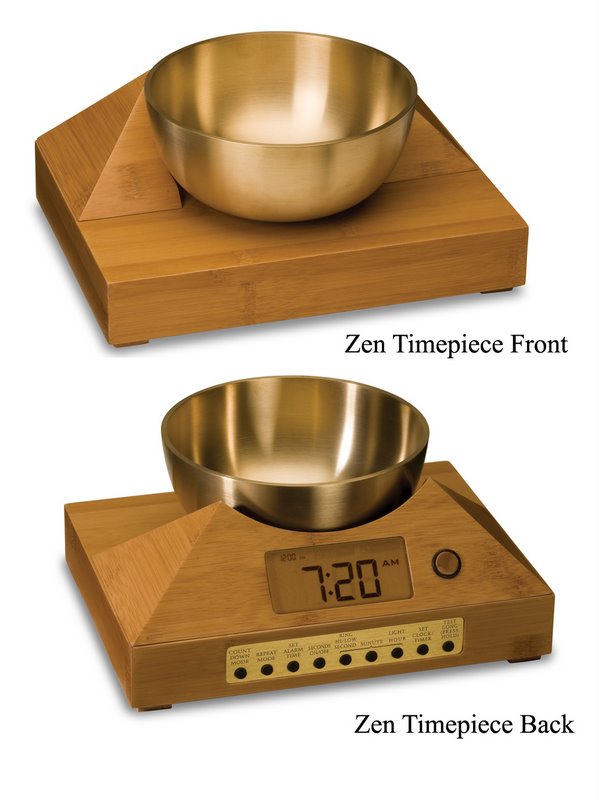 Set Your Gong Meditation Timer for Your Mindfulness Practice Now & Zen – The Gong Meditation Timer
 The Gong Meditation Store - Boulder, CO 1638 Pearl Street
Boulder, CO 80302
(800) 779-6383
orders@now-zen.com
Posted in Well-being, Yoga Timers by Now & Zen, Zen Timepiece by Now & Zen, Zen Timers
 Yoga Clocks and Timers by Now & Zen, Inc. YOGA FOR BEDTIME
Need help sleeping? Doing yoga exercises before bedtime can be just what you need
Sit up in bed comfortably, either with your legs folded or straight in front of you; whatever you can do with the most ease. Sit up and lean slightly back on your pillows or backboard. Close your eyes and rest your hands on your thighs and just breathe here for a few minutes. This doesn’t have to be a serious meditation but just a short while to do nothing but breathe.
Need a Yoga & Meditation timer? Get the natural one: A Bowl-Gong Bamboo Zen Timepiece from Now & Zen
Spiritual practices such as meditation or yoga are best done in an environment of beauty and tranquility. And the clock/timer you use for your practice can make a real difference in creating such an environment. But using a timer with artificial “beeps,” or even “recorded gongs,” coming out of a plastic box can be less than ideal. The Bamboo Zen Timepiece is unlike any other meditation timer on the market because it features a real, natural, acoustic, long-resonating gong, produced by its traditional Japanese style bowl-gong, or “rin-gong”. Moreover, The Zen Timepiece is made with sustainable natural bamboo, so it is as beautiful to see as it is to hear. Once you use a Zen Timepiece, nothing else will do.
 Yoga & Meditation Timer and Clocks Now & Zen – The Yoga Clock & Timer Store
1638 Pearl Street
Boulder, CO 80302
(800) 779-6383
Posted in Bamboo Chime Clocks, Meditation Timers, Meditation Tools, mindfulness practice, Well-being, Yoga Timer, Yoga Timers by Now & Zen, Zen Alarm Clock, Zen Timepiece by Now & Zen, Zen Timers
« Previous Page — « Previous Entries
Next Entries » — Next Page »
|
|
|
|